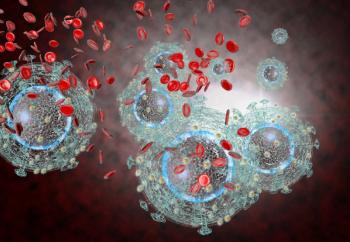
Narrowing the Cause of Drug-Drug Interactions in HIV
Clinically significant drug interactions involving antiretroviral agents have been reported in 30% to 40% of HIV-positive patients in the USA. However, this study finds that just a few therapeutic groups are responsible for most of the interactions detected.
Clinically significant drug–drug interactions are highly prevalent in HIV-infected patients, and could represent a major health problem.
With the advent of improved antiretroviral therapy (ART), the expected lifespan of HIV-positive individuals has increased dramatically. However, comorbidities have become increasingly more common, including cardiovascular disease, hyperlipidemia, hypertension, diabetes, osteoporosis, renal disease and non-AIDS-related cancers. To treat these comorbidities, HIV-infected patients now receive a wide variety of drugs, such as antidepressant or antibacterial medications, along with ART.
The combination of these drugs presents the potential for drug–drug interactions, an important cause of adverse drug reactions, noted lead author Carles Iniesta-Navalón of the Department of Hospital Pharmacy, Queen Sofia Hospital of Murcia, Spain, and colleagues in an
Clinically significant drug interactions involving antiretroviral agents have been reported in 30% to 40% of HIV-positive patients in the USA. Non-antiretroviral drugs may be responsible for undesirable side effects and may reduce adherence to treatment, leading to less effective ART, they noted.
The researchers set out to determine the prevalence of potential clinically significant drug interactions in HIV-positive individuals, and to identify any associated risk factors.
Their cross-sectional study included 269 HIV-positive patients, median age 45 years. Virtually all the patients (95.5%) were receiving combination ART that included at least 3 active anti-retroviral agents.
They were screened for possible clinically significant drug interactions, and the severity level of the interactions involving antiretroviral drugs was compared with that established in a specific antiretroviral database.
The researchers identified 292 potential drug interactions of which 102 (34.9%) were clinically significant drug interactions; slightly more than half of these involved anti-retroviral drugs. About 20% of the study population had at least 1 potential clinically significant drug interaction. The most frequent drug combinations of ART involving interactions were emtricitabine/tenofovir (44.4%), emtricitabine/tenofovir/efavirenz (32.8%) and abacavir/lamivudine (9.0%).
In three-quarters of the clinically significant drug interactions, 7 therapeutic drug classes were involved, including protease inhibitors, benzodiazepines, NSAIDs, non-nucleoside reverse transcriptase inhibitors, corticosteroids, anti-thrombotics, and proton pump inhibitors. The most frequent drugs involved in clinically significant drug interactions were ritonavir (30.4%), alprazolam (19.6%) and etravirine (13.7%).
Results from a logistic regression model found certain factors were independently associated with clinically significant drug interactions. These include treatment with more than 5 drugs (odds ratio 15.1) and treatment with a protease inhibitor (OR 5.3).
“The importance of these results is the finding that just a few therapeutic groups are responsible for most of the interactions detected,” the researchers wrote.
In one-third of the interactions detected, the recommendation was to avoid this combination of drugs. In two-thirds, the recommendation was patient monitoring.
In conclusion, the researchers stated: “Awareness, recognition and management of drug interactions are important in optimizing the pharmaceutical care of HIV-infected patients and helping to prevent adverse events and/or loss of efficacy of the drugs administered.”
Newsletter
Enhance your clinical practice with the Patient Care newsletter, offering the latest evidence-based guidelines, diagnostic insights, and treatment strategies for primary care physicians.






















































































































































































































































































